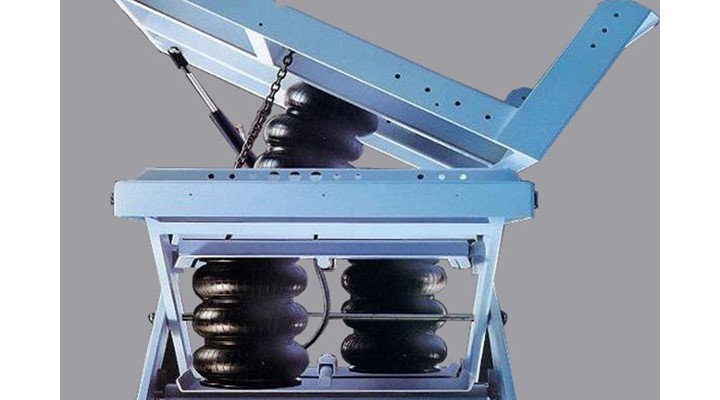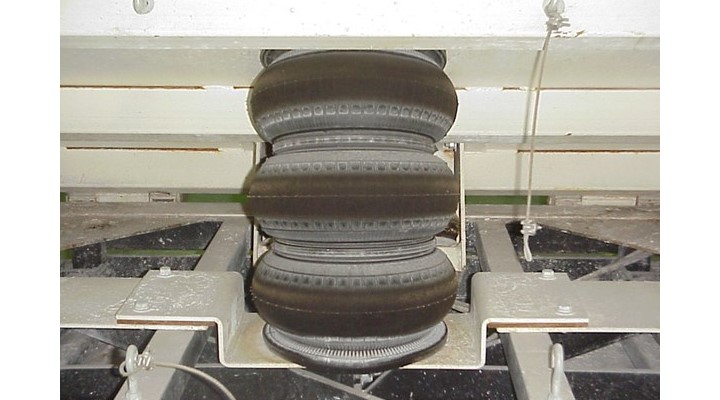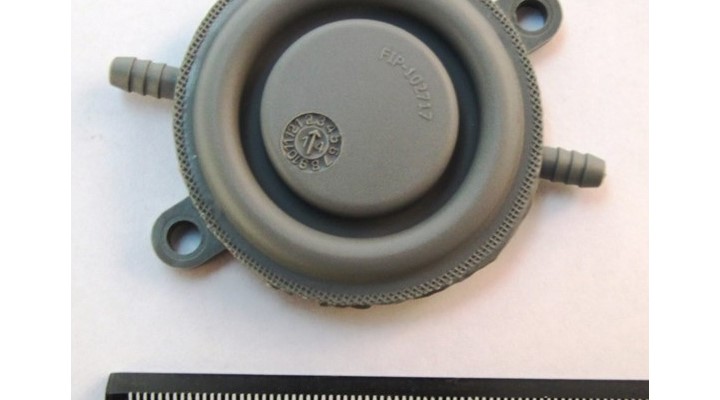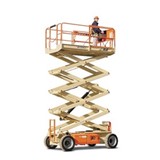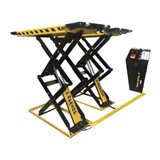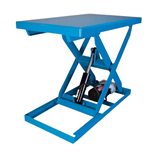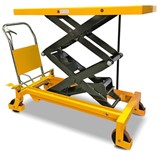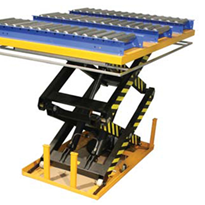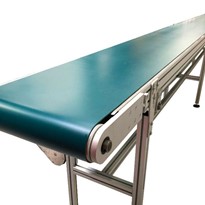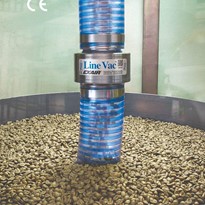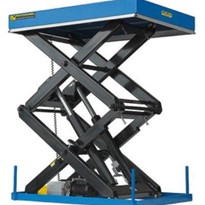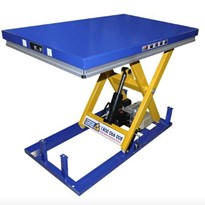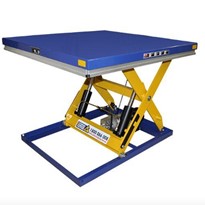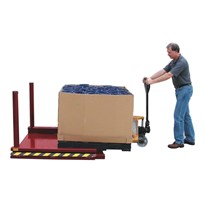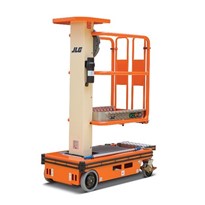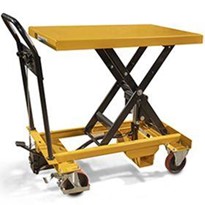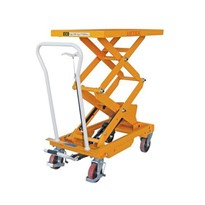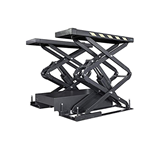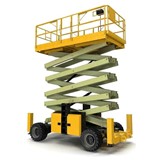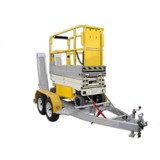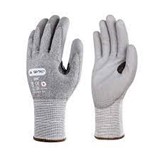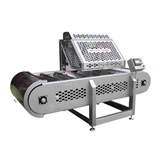A case in point is air-actuated scissor lifts, which provide durable, hygienic and safe lifting solutions for applications which require pneumatic operation rather than hydraulic, such as explosion-proof or environmentally sensitive locations and some aggressive environments where dust and grit are an issue and avoidance of contamination is important.
Scissor lift and tilt tables can be cost-efficiently actuated by compact heavy-duty air bag actuators which are connected to a plant's standard 7 bar (100 psi) shop air system. Such air bag (or air springs) scissor tables are used in a wide variety of applications globally to improve worker ergonomics and enhance plant efficiencies.
Air-actuated scissor lifts offer a durable, low precision, low cost and portable lifting solution which can be readily customised to fit specific material handling application requirements, including conveyors and lift tables in production and packaging applications ranging from delicate and clean food processing to heavy and dirty minerals and powder processing tasks.
"Despite the vastly different weights and loads often involved, the principal advantages are the same," says James Maslin, Sales and Marketing Manager for Air Springs Supply, the Australian distributor of Firestone Air Springs.
"The attributes that make these airbag actuators and isolators attractive to each industry – including simplicity, durability and no guides or seals to wear and break under the impact of grime or corrosives – means they often excel when the going gets tough and the environment gets aggressive and dirty. They are also easy to wash down and don't attract dirt to oily surfaces, because they don't have any to disrupt hygiene"
In capacities from a few dozen kilograms to more than 40 tons per unit, they're clean, quiet and extremely tough (after all, these are typically the same airbags that big trucks and trains ride upon, replacing metal springs because of their comfort, durability and load-friendly smooth performance). Lack of noise and breakdowns is a major safety benefit.
Compact
The largest triple convoluted Airstroke actuator is 37 inches [940 mm] in diameter and will collapse to a very compact 5.5 inches [140 mm].The smallest Airstroke® actuator is 2.3 inches [58 mm] in diameter and collapses to just 1.2 inches [31 mm] in height. Firestone's even smaller but robust Airomatic™ pneumatic actuators stand just 11mm (.45in) high deflated for ultra-compact installation in light load applications demanding high reliability, rapid cycling and metal-free hygiene.
"In essence, an air actuator is simply two end plates connected by a bladder, and as they're pressurized, force pushes the plates away from each other," says Maslin. In most cases, the minimum (or deflated) height is considerably less than the available stroke. As a result, air springs can be put in a very compact space and extended to more than twice their starting height. This is a tremendous benefit in floor-mounted lifting devices, such as scissor lifts."
Both convoluted and rolling sleeve types of air spring operate in the same simple way: compressed air (and sometimes liquids) is directed into the air springs, expanding their fabric-reinforced rubber bladders to expand in a linear fashion from their compact collapsed state to become force-developing actuators.
The available stroke of an Airstroke air spring is limited by the length of the side wall. This length is determined by stability factors (length-to-diameter considerations). These design needs can frequently be met by specifying either single, double or triple-convoluted air springs.
Their lack of seals also means lack of friction. In many cases, a constant force needs to be applied to a moving object. With traditional cylinders, the sliding seals can stick, providing a jerky motion that can damage equipment.
"The type of actuation engineers design into their materials handling technology depends very much on the task involved, says Maslin. "For some slower, precision and less repetitive applications, hydraulics can be the way to go. For faster, high-repetition applications, pneumatics such as air springs are the ideal solution. No one type of actuation is ideal for every task.
"What is for certain, however, is that air springs are a maintenance-free, compact and easy to install option for a huge variety of tasks for which they are not always considered in Australia, including scissor lifts and other materials handling tasks. Where the primary requirements are lower cost, simplicity, rapid cycling and extremely durability, they very definitely have some big advantages."


